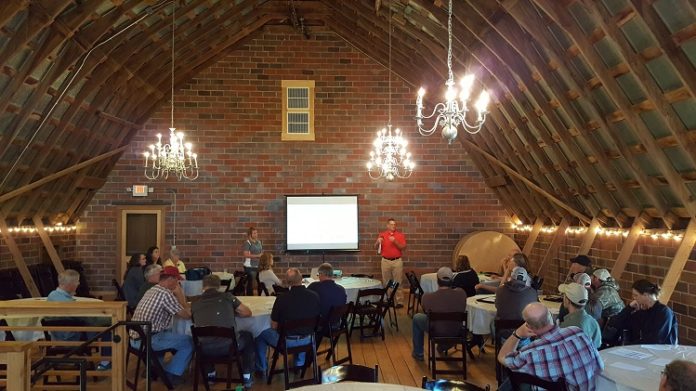
Farmers and other residents of Dallas County gathered at the Historic Keller Brick Barn near Dallas Center last Tuesday to learn about cover crops. The 1930s-era barn was a fitting spot to meet because it reminded guests how much the landscape in Iowa has changed in the last century.
Catherine DeLong, a water quality specialist with the Conservation Districts of Iowa, began the meeting by reminding the audience that as recently as 1955 about 65 percent of the land in the Raccoon River Watershed, which includes Dallas County, was planted to small grains, alfalfa and hay.
While corn and soybeans are now the reigning crops in Iowa, DeLong said, cover crops can mimic the living roots that these small grains used to provide during Iowa’s spring rains.
Joel Thomas, winner of the Iowa Farm Environmental Leader Award in 2016, discussed the lessons he’s learned from years of experimenting with cover crops. Thomas handed out a sheet on the advantages and disadvantages of cover crops, which included the benefits of different species and management considerations.
One of the benefits Thomas said he has seen is a .3 percent increase in organic matter in his cover-cropped fields.
Heidi Dittmer, a soil conservationist with the Dallas County Natural Resources Conservation Service, said that Thomas was right on track to accomplish the 1 Percent Challenge, which is a new venture challenging Dallas County farmers to increase their soil organic matter by 1 percent in the next 10 years.
Cover crops are a great way to accomplish this, Dittmer said, along with decreased tillage and longer rotations, all of which help to enhance soil health.
Jason Danner and Skylar Kellis of Heartland Coop also presented on the benefits of cover crops and why they recommend them to their customers.
During a delicious lunch provided by Kue’d Smokehouse, Eric Wessels, an architect and member of the Dallas County Soil and Water Commission, described the process of renovating the historic 1930s barn, including repurposing chandeliers from resale shops across the state. The result is spectacular and the barn is now booked for weddings every weekend through November.
After lunch, the audience got the chance to pepper new and experienced cover croppers with their questions. Dan Golightly, Jon McClure, Randolph Schaefer and Sam Spellman, all Dallas County farmers, described their experience with cover crops.
There were several trends that came out of their answers: First, none of the farmers had any problems with water hemp or mare’s tail in their fields that had cover crops. All felt that one of the greatest benefits from cover crops was increased weed pressure and decreased herbicide costs.
None had experienced any problems with rye cover crops clogging tile lines or not being effectively terminated. One of the speakers also said, “I’m in my fields days before my neighbor” for planting because my cover cropped land drains better.
After a question from an audience member about negotiating with your banker about investing in cover crops, Randolph Schaefer responded, “My banker doesn’t bother me because I make so much money strip-tilling and no-tilling!”
The event was concluded by Mark Kennett, an assistant Soil and Water commissioner in Poweshiek County, who discussed aerial seeding of cover crops. Kennett then showcased his remarks with a demonstration from Iowa Helicopter.
The two audience members who asked the best questions during the meeting were then treated to a joy ride by pilot Norm Robbins of Iowa Helicopter.








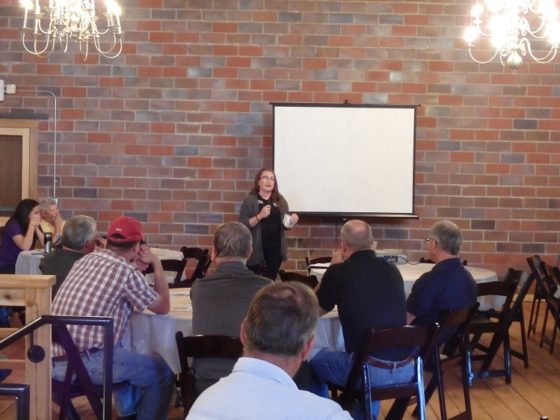
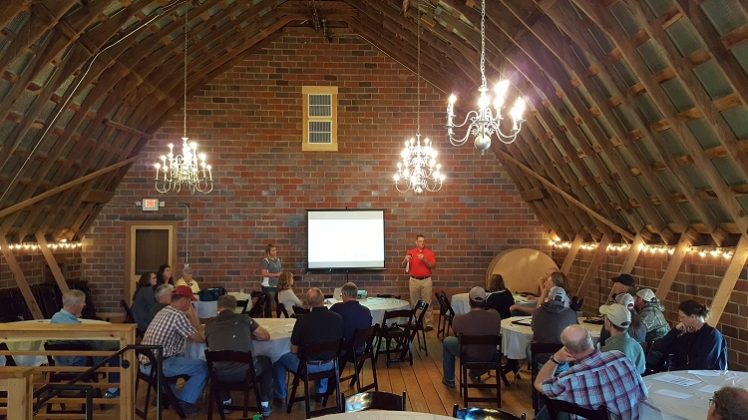
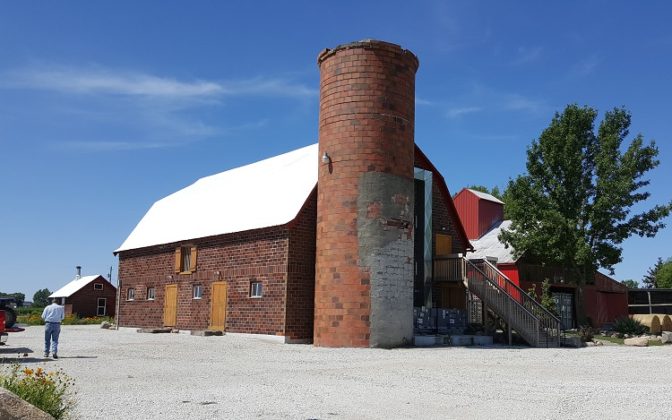
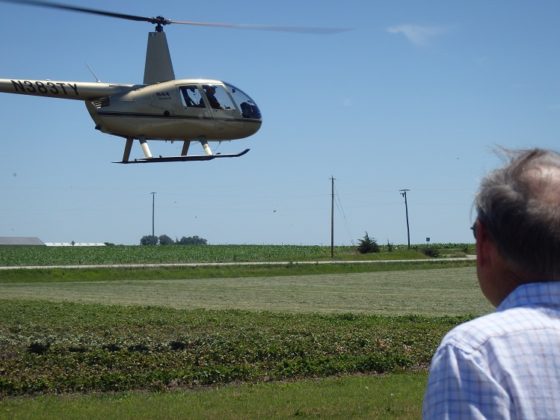








Kudos to these farmers. I see far too much land planted with corn or beans every year with no rotation at all. Some fields are planted with corn year after year. That’s one of the effects of Big Ag for you. To heck with environmental quality if it hurts your bottom line.